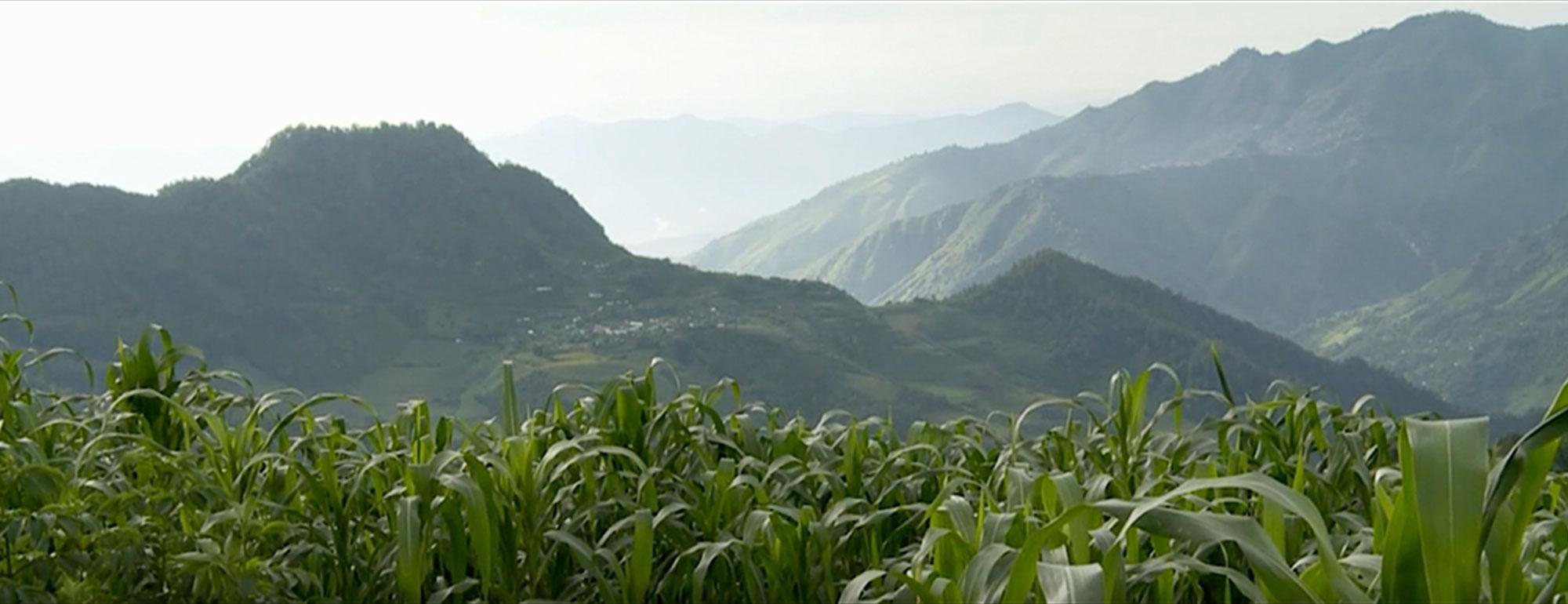IN THE UNITED STATES, more than 90 million acres of corn are planted every year. Corn uses more land than any other crop. It also uses a lot of fertilizer. By one estimate, 5.6 million tons of nitrogen are applied each year, along with nearly a million tons of nitrogen from manure.
Nitrogen is an essential nutrient for plants. While nitrogen makes up 78 percent of the atmosphere, only legume crops were known to have the ability to use it, through their association with bacteria.
“Legume crops like soybeans have nodules on their roots that harbor bacteria that can turn nitrogen in the air into a form the plant can use,” said Alan Bennett, distinguished professor of plant sciences at the University of California, Davis. “For cereal crops like corn, farmers must rely primarily on nitrogen fertilizers.”
Bennett is part of a multidisciplinary team of researchers from UC Davis, the University of Wisconsin–Madison, and Mars, Incorporated that has made a remarkable discovery: an indigenous variety of Mexican corn that can also fix nitrogen from the atmosphere, instead of requiring synthetic fertilizers.
The team’s findings were published Aug. 7 in the journal PLOS Biology.
If this trait can be bred into conventional varieties of corn, it could reduce the need for added fertilizer and increase yields in regions with poor soil. Corn that fixes nitrogen could also help farmers in developing countries that may not have access to fertilizer.
“This research has been 40 years in the making and is a significant breakthrough in our attempts to find a more sustainable way of growing corn, one of the world’s key crops,” said co-author Howard-Yana Shapiro, chief agricultural officer at Mars, Incorporated.
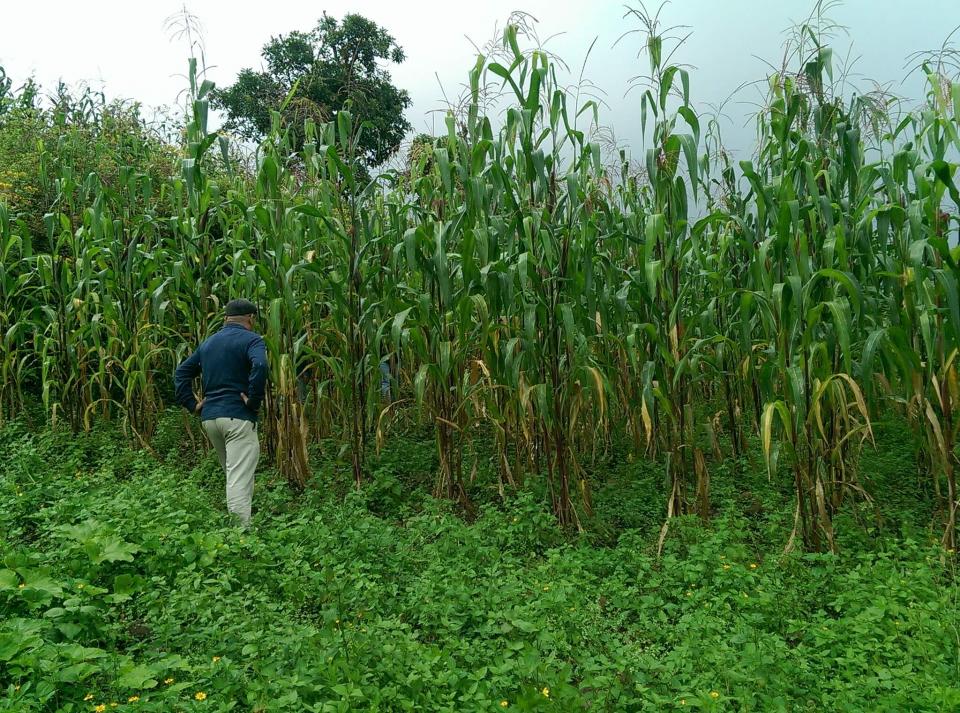
Sierra Mixe corn discovery
Corn is a wild plant, domesticated in Mexico about 10,000 years ago. A number of these domesticated varieties evolved in isolated villages in the Sierra Mixe region near Oaxaca.
Indigenous farmers there would make selections every year and develop corn that worked in their environment.
“At the time, they didn’t have access to fertilizer, so it had to grow in a very low-fertility soil,” said Bennett.
Researchers spent years searching for these indigenous varieties, called landraces. It was thought the corn might associate with nitrogen-fixing bacteria. In the 1980s, Howard-Yana Shapiro observed such corn being grown in nitrogen-deficient soil. It was not until the 2000s that new technologies developed to allow researchers to intensely study this nitrogen-fixing process.
“It has been difficult to identify such a landrace and demonstrate that this nitrogen-fixing association actually contributes to nitrogen nutrition of the plant,” said Bennett. “Our interdisciplinary research team has been working on this for nearly a decade.”
This discovery opens the door to significantly improving the genetic potential and food security for these countries.
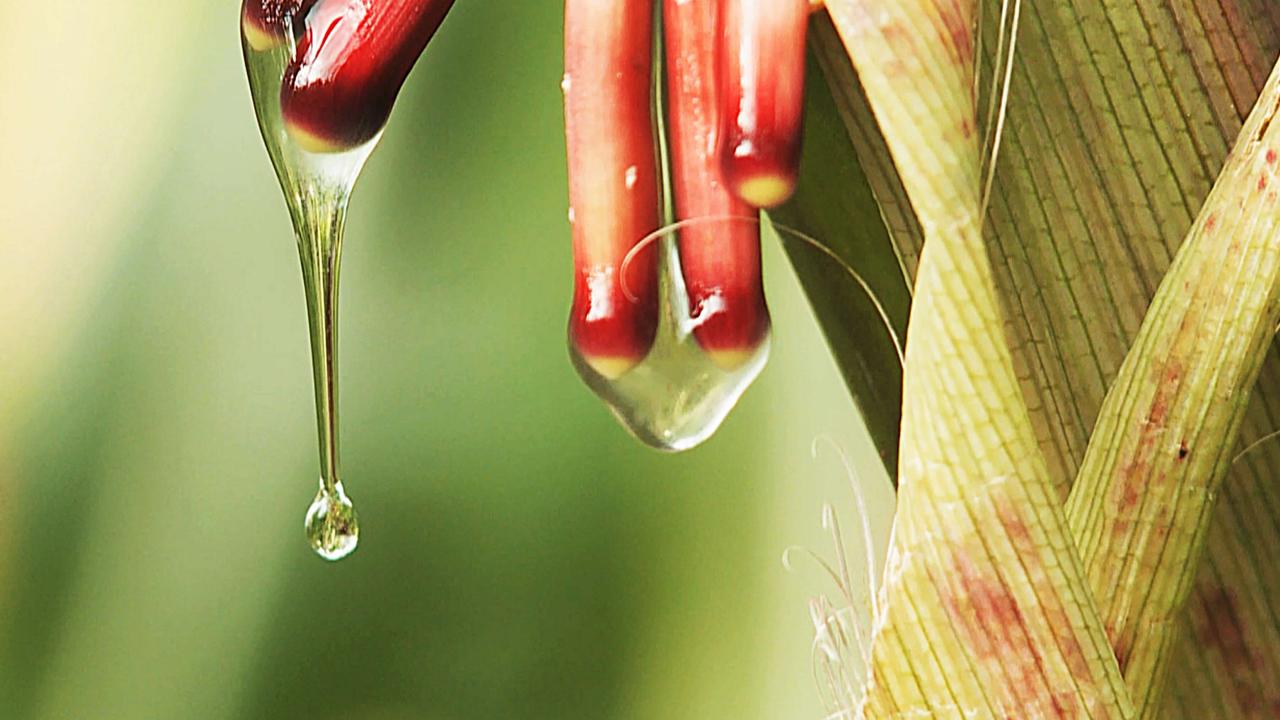
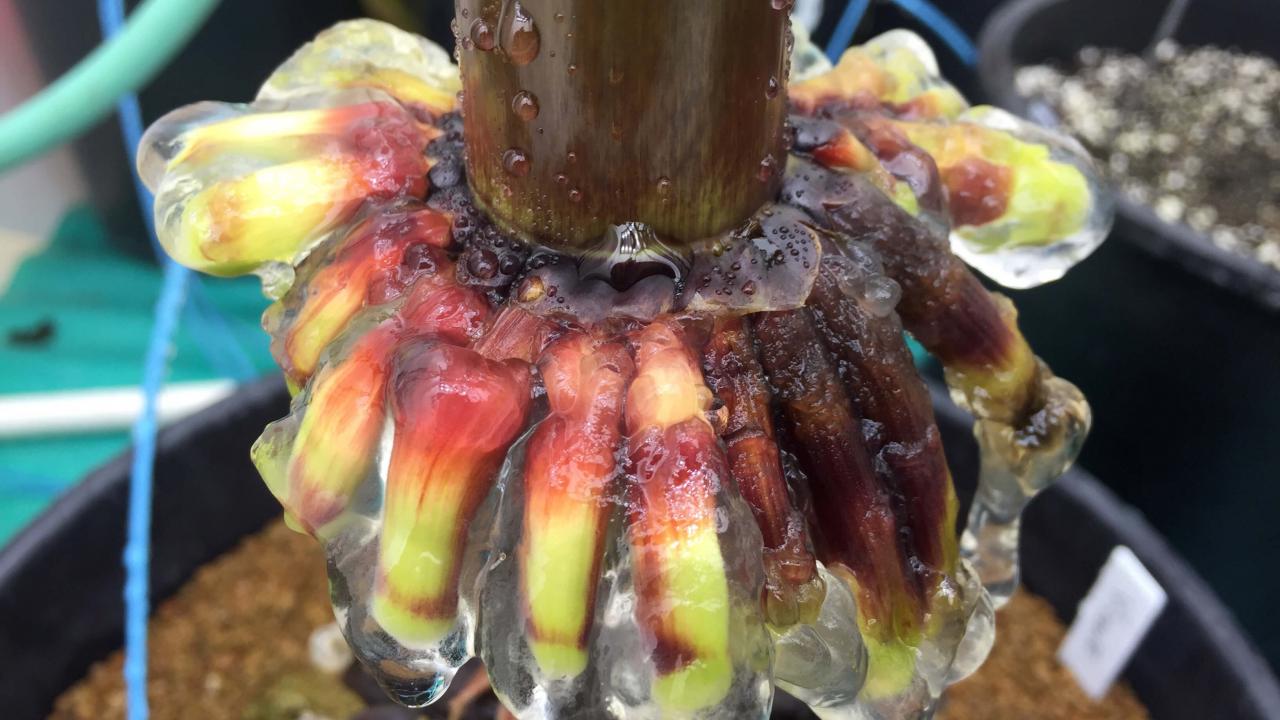
How it works
The tropical corn discovered in the Sierra Mixe region looks nothing like conventional corn. It can grow more than 16-feet-tall, towering over the typical 12-foot-tall conventional varieties. It also grows slowly, taking eight to nine months rather than the three months of conventional corn.
The study found the Sierra Mixe corn obtains 28 to 82 percent of its nitrogen from the atmosphere. To do this, the corn grows a series of aerial roots. Unlike conventional corn, which has one or two groups of aerial roots near its base, the nitrogen-fixing corn develops eight to ten thick aerial roots that never touch the ground.
During certain times of the year, these roots secrete a gel-like substance, or mucilage. The mucilage provides the low-oxygen and sugar-rich environment required to attract bacteria that can transform nitrogen from the air into a form the corn can use.
“Our research has demonstrated that the mucilage found in this Sierra Mixe corn forms a key component of its nitrogen fixation," said co-author Jean-Michel Ané, professor of agronomy and bacteriology in the College of Agricultural and Life Sciences at UW–Madison. “We have shown this through growth of the plant both in Mexico and Wisconsin.”
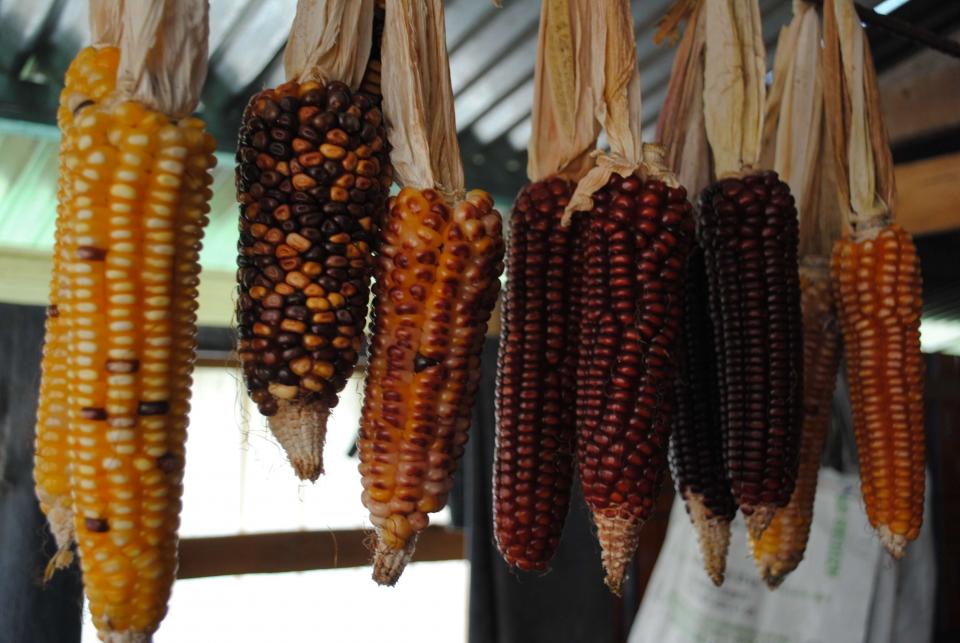
Hope for sustainable agriculture
Researchers are a long way from developing a similar nitrogen-fixing trait for commercial corn, but this is a first step to guide further research on that application. The discovery could lead to a reduction of fertilizer use for corn, one of the world’s major cereal crops. It takes 1 to 2 percent of the total global energy supply to produce fertilizer. The energy-intensive process is also responsible for 1 to 2 percent of global greenhouse gas emissions.
“Corn yields in developing countries are one-tenth of those found in the U.S., due both to variety development and access to affordable nitrogen fertilizer,” said co-author Allen Van Deynze, director of research at the UC Davis Seed Biotechnology Center. “This discovery opens the door to significantly improving the genetic potential and food security for these countries.”
The municipal authority and community in the isolated village in the Sierra Mixe region were an integral part of this research project. Biological materials were accessed and utilized under an Access and Benefit Sharing (ABS) Agreement with the community and with permission from the Mexican government. An internationally recognized certificate of compliance under the Nagoya Protocol has been issued for such activities.
“As one of the world’s largest food businesses, Mars is committed to reducing the environmental strain caused by farming,” Shapiro added. “We embarked on this uncommon collaboration decades ago to drive forward a discovery that has the potential to create a lasting and positive impact on sustainable agriculture.”
The ABS Agreement was structured under the terms of the Nagoya Protocol on Access and Benefit Sharing, which is designed to ensure the equitable sharing of benefits arising out of the utilization of genetic resources and contributing to the conservation and sustainable use of biodiversity.
This research was facilitated through the tremendous cooperation of SEMARNAT and SAGARPA, two agencies of the Mexican government responsible for implementation of the access and benefit-sharing provisions of the Nagoya Protocol.
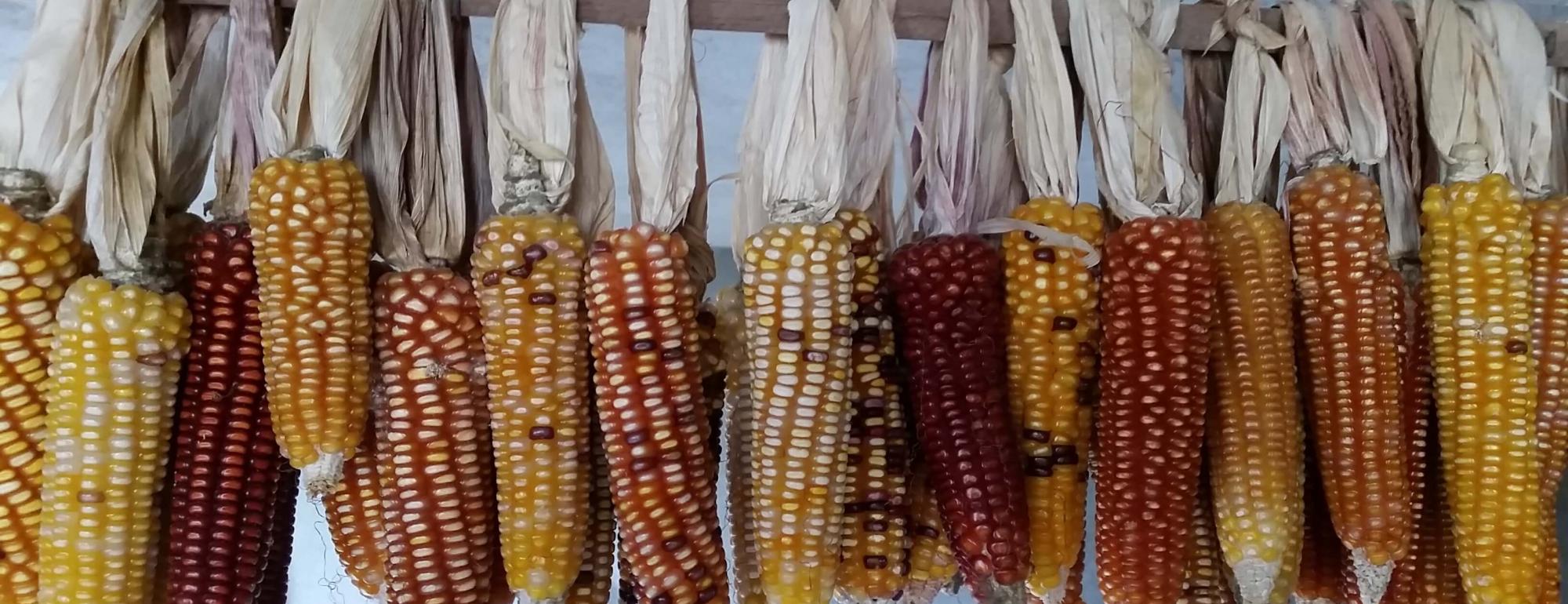
Media Resources
Amy Quinton, UC Davis News and Media Relations, 530-752-9843, cell 530-601-8077, amquinton@ucdavis.edu
Other authors include Pablo Zamora, Cristobal Heitmann, Alison Berry, Donald Gibson, Kevin Schwartz, Srijak Bhatnagar, Guillaume Jospin, Aaron Darling, Jonathan Eisen, Richard Jeanotte, and Bart Weimer of UC Davis; Javier Lopez, Instituto Tecnologico del Valle de Oaxaca, Oaxaca, Mexico; Pierre-Marc Delaux, Dhileephumar Jayaraman, Shanmugam Rajasekar, Danielle Graham, and Junko Maeda of UW–Madison.
